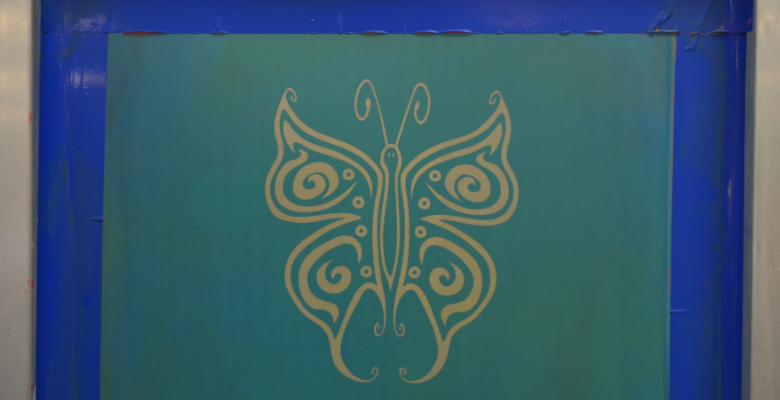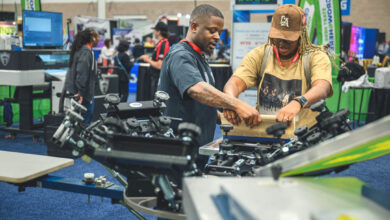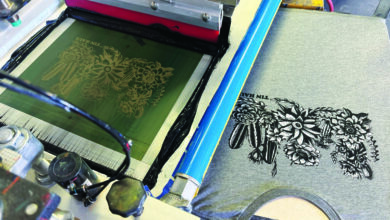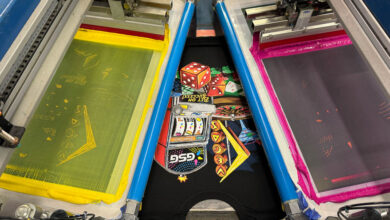
Deciding on which emulsion to use in your prints can be a tricky equation, especially for beginners. There are two main types of emulsions:
- SBQ-based emulsions (composed of Styryl Basolium Quaternary) also referred to as pre-sensitized emulsions
- Diazo emulsions (contain Benzene Diazonium) require manual mixing of a photosensitizer
SBQ-based emulsion comes in one container and doesn’t need any mixing. The intricate bonds created by SBQ-based emulsion make it ideal for detail work. However, it cures exceptionally quickly when exposed to UV light. Therefore, it can be very unforgiving, especially for beginners. This type of emulsion is very receptive to light, so much so that daylight on a rainy day can cause it to expose your image. SBQ emulsion creates a thinner stencil, but multiple coats can create a thicker stencil if needed. It’s one of the most expensive emulsions on the market but has a shelf life of more than a year. SBQ emulsion offers little resistance to water exposure. Another thing to consider if you’re working with this type of emulsion-you’re going to need an exposure unit with a timer and a darkroom equipped with a washout booth.
Diazo emulsions require a longer exposure, taking 15 minutes or more to cure fully. This is great for beginners because it allows you more room for error when curing. However, it’s not ideal for detailed prints or prints that require halftones because it creates a thicker stencil. With that said, Diazo emulsions are the cheapest on the market making it the best option for beginners on a tight budget. Keep in mind though that these emulsions only last a few months on the shelf. An old trick for storing this emulsion is to put it in a refrigerator. However, there is no concrete evidence supporting its effectiveness. If you use this method, be sure not to let it freeze. Because it is so forgiving, you can use this emulsion with an exposure unit that does not have a timer, and you can wash it off outside.
Another emulsion to consider that combines elements of both SBQ-based emulsions and Diazo emulsions is dual-cure emulsions. This emulsion requires mixing and dries quicker than diazo emulsions but not as quickly as pure SBQ-based emulsions. Dual-cure emulsion isn’t as expensive as SBQ-based emulsions and creates a thicker stencil.
When it comes down to it, you want to go with the emulsion your ink manufacturer recommends. You can be confident you’re using the right emulsion by going with their recommendation. If you’re a beginner, stick with a more forgiving emulsion. If you’re dealing with a detailed design that requires a more complex exposure, refer to your ink manufacturer for suggestions. As time goes on, with more experience, you’ll be better equipped to decide on which emulsions to use for your jobs.
For additional screen-printing know-how, check out the Texsource blog.



